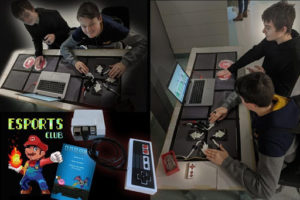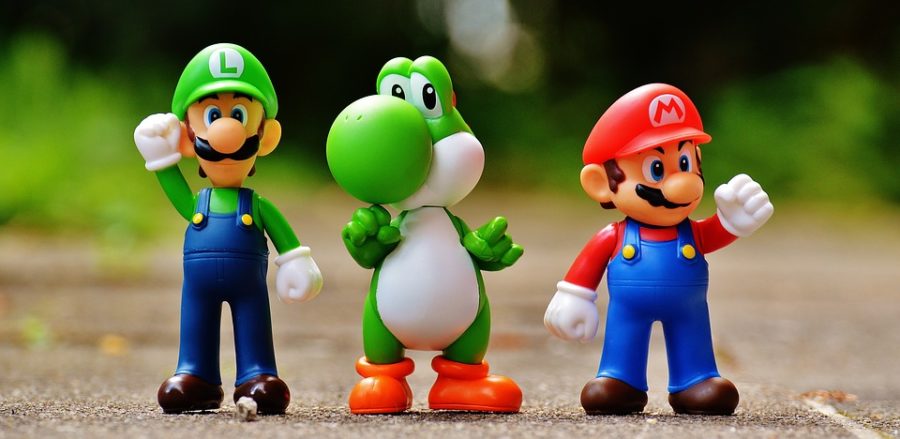As we approached the final week of our semester, I challenged myself with the idea of making a table-sized Nintendo game controller to engage students with something new and possibly cool!? “Now that’s hard to believe…Mr. Clement = Cool? Well…I try…”
I teach grade 9 Computer Programming and Coding Level 1 courses and Graphic Design at the Steinbach Regional Secondary School. My prior vocation was in graphic design, and I’ve always worked alongside coders to produce websites and other various marketing material. I consider myself to be more of a graphic designer than a coder. Leveraging technology by exposing students to new technology and out-of-the-box thinking is what I try to do on a day-to-day basis. This time, we intended to end the semester with a bang!
This project has evolved from my teaching experience with Michele Buchanan at Kildonan East Collegiate during my time as a vocational teacher. The original project was based on old school games where each student had to design or re-create an original Nintendo 32 x 32 pixel character or scene of their choice. This tied into learning about animation, games, and design. I was amazed at how much interest and buy-in there was with old school gaming and how this created incredible momentum in class.
This simple and fun pixel art activity has led to the student creation of pixel art posters, promoting our school ESports team, the 3D printing of mini NES consoles, and coding of platformer games using Scratch. As a teacher, it’s given me opportunities to lead professional development workshops within HSD, introducing teachers to the subject of 3D printing, pixel art, and animation. It has also led to the collaboration with fellow teachers in our school to develop a weekly Creative Club, intended for students to meet and explore their personal creative interests, often involving technology. These events have led to sparking my interests in getting my students involved in developing custom game controllers using Raspberry Pi and Makey Makeys.
What is a Raspberry Pi or a Makey Makey, you may ask? (If you’re hungry for pie, you may want to go to MJ’s Cafe.) The type of pi I’m talking about is a mini computer that you can sink your teeth into with programming and design. Our students 3D printed mini NES Consoles that are intended to look like an original Nintendo Entertainment System, but smaller. The printed shell allows the user to insert a Raspberry Pi which runs the Retro Pi emulator and simulates the classic NES game platform. My students ate it up! (If you’ll excuse the phrase.) You can find the design on thingiverse.com.
I’ve been told by students, “WOW! I can’t believe this is being taught at school! I felt like I was the only one working on stuff like this at home as a hobby.” I can’t take full credit for doing all the teaching. To be honest, I’ve learned as much from my students about this topic as they have from me. If it weren’t for their input and interest, I wouldn’t have gotten this far with it. The students were the real motivators for leveraging digital in the classroom!
My vision of this project in the future is to have students program and design their own games to feature in a full-scale arcade box to showcase their best work collaborating with teachers and students in other disciplines within the school (i.e. carpentry, electrical, ELA (story), history, graphic design, coding, 3D design, etc.). The possibilities can be endless!
This project has been so much fun for both the students as well as me. The strongest driver to the success of my students is to find what clicks with them and nurture a genuine love and interest for learning technology together.
Check in with me for more updates as we go.
Software to Check out:
Piskel – www.piskelapp.com
Tinkercad – www.tinkercad.com
Thingiverse – www.thingiverse.com
Hardware:
Raspberry Pi – www.raspberrypi.org
Makey Makey – makeymakey.com
Author: Mr. Daniel Clement, Vocational Graphic Design Teacher, SRSS
